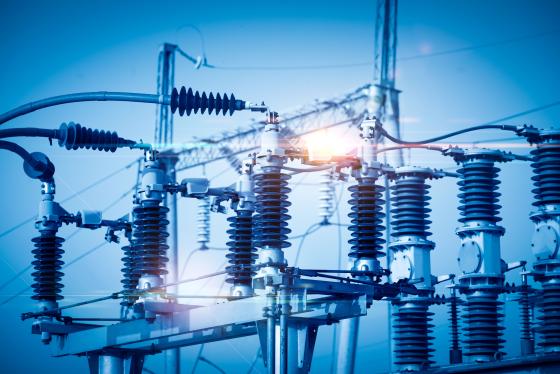ACER-ENTSOG joint workshop on Gas Balancing
Bajcsy-Zsilinszky út 52, 1054 Budapest, 17 November, 2015. From 10:00 AM to 5:00 PM
|
In case you have further questions, please contact ACER (Balancing_workshop(at)acer.europa.eu)
Bajcsy-Zsilinszky út 52, 1054 Budapest, 17 November, 2015. From 10:00 AM to 5:00 PM
|
In case you have further questions, please contact ACER (Balancing_workshop(at)acer.europa.eu)

ACER monitors the effective implementation of the Gas Balancing Network Code and shares its findings in dedicated reports. Most reports used an enhanced review of the country assessments for all or a large subset of balancing zones, focusing on key features of the balancing design.
Interim measures have been terminated in most countries and Code implementation has reached a high degree across Europe, with a few exceptions due to structural market limitations.
ACER recommends to increase transparency on information provision, also beyond the minimum requirements, and to explore possible efficiency gains (e.g. via balancing zone mergers) to overcome the persisting structural market limitations that do not allow full code implementation.
The Balancing Analytical Framework builds on analysing neutrality as a key indicator to understand robust gas accounting and wider regime performance. The Balancing Analytical Framework serves as a quantitative comparison tool, to quantify whether the role of the TSO is residual in balancing or whether network users play an active role, while shedding light on imbalance price differences and neutrality accounting. The framework facilitates comparisons between various balancing regimes in the European Union. The data used in the analysis was provided by ENTSOG and complemented and validated by the Agency.
To facilitate the discussion and sharing of best practices on the Code's implementation, a series of workshops was organised. These debates included inputs from the Agency, ENTSOG and representatives of the network user community.
Check out ACER's gas balancing dashboard & learn how to interact with it.
The Agency has been informed by the European Commission that the proposed changes to the Articles of Association and other statutory documents of ENTSO-E would still need to be further adapted, inter alia in light of the obligations stemming from the Trade and Cooperation Agreement with the UK, and which would therefore require a resubmission of the afore-mentioned ENTSO-E documents.
For reasons of procedural efficiency, the Agency has therefore decided to halt its proceedings on the proposed changes to ENTSO-E's Articles of Association and other statutory documents.
Any comments which the Agency has meanwhile received in the course of the current proceedings will be taken into account when the Agency will examine the finalised proposal of statutory documents, once the above-mentioned further implementing measures have been taken, and to the extent that they will remain relevant in light of the possible additional changes made to the documents submitted. In case relevant changes would be made to any of the statutory documents consulted, the Agency will allow for a new consultation, so as to enable additional comments to the Agency.
ACER consults on amended statutory documents of ENTSO-E, in accordance with Article 29 of Regulation (EU) 2019/943 of 5 June 2019 on the internal market for electricity.
This consultation is addressed to the organisations representing all stakeholders, in particular system users, including consumers.
Replies to this consultation should be submitted to ACER by 12 April 2021, 09:00 hrs (CET).
For any questions, please contact us on: ENTSO-E-statutes-amendments(at)acer.europa.eu
Not yet available.
The proposal for a methodology for short-term and seasonal adequacy assessments in accordance with Article 8 of the Regulation (EU) 2019/941 on risk preparedness in the electricity sector and repealing Directive 2005/89/EC ('RPR') was submitted to the Agency by ENTSO-E on 6 January 2020.
In this regard, the Agency has initiated a procedure to adopt a decision (Ref ACER-ELE-2020-004). The decision shall be adopted by 6 March 2020.
The Agency seeks the views of stakeholders on the issues raised in the proposal. Other comments and concerns are also welcome. This consultation is addressed to all interested stakeholders, including the Electricity Coordination Group (ECG, National Regulatory Authorities, and Transmission System Operators.
Responses to this consultation should be submitted by 12 January 2020 23:59 hrs (CET) via the online survey.
The proposal for a methodology to identify regional electricity crisis scenarios in accordance with Article 5 of the Regulation (EU) 2019/941 on risk preparedness in the electricity sector and repealing Directive 2005/89/EC ('RPR') was submitted to the Agency by ENTSO-E on 6 January 2020.
In this regard, the Agency has initiated a procedure to adopt a decision (Ref ACER-ELE-2020-003). The decision shall be adopted by 6 March 2020.
The Agency seeks the views of stakeholders on the issues raised in the proposal. Other comments and concerns are also welcome. This consultation is addressed to all interested stakeholders, including the Electricity Coordination Group (ECG), National Regulatory Authorities, and Transmission System Operators.
Responses to this consultation should be submitted by 12 January 2020 23:59 hrs (CET) via the online survey.

ACER is committed to sharing knowledge and first-hand experience with relevant stakeholders and interested parties.
ACER communicates the relevant information via dedicated REMIT publications:
First published in March 2015, the REMIT Quarterly is ACER's main channel of communication with stakeholders on REMIT-related matters. It primarily provides updates on ACER's activities, as well as guidance on the application of the REMIT framework and data reporting.
The REMIT Quarterly also reports any assessments of the operation and transparency of different categories of organised market places and ways of trading, in accordance with Article 7(3) of REMIT.
The REMIT Quarterly is published each quarter on ACER's REMIT Portal.

In accordance with Article 7(3) of REMIT, ACER shall assess on an annual basis the operation and transparency of different categories of organised market places (OMPs) and ways of trading.
The REMIT Annual Report was discontinued in 2017. Ever since, ACER reports its transparency assessments through the REMIT Quarterly instead.

Access ACER Q&As and explore the different sections:
An Inside Information Platform (IIP) is an electronic system for the delivery of information which allows multiple market participants to share information with the wider public and complies with the minimum quality requirements listed in the ACER Guidance.

The Regulation on guidelines for trans-European energy infrastructure (TEN-E Regulation) introduced the cross-border cost allocation (CBCA) as a regulatory tool to facilitate the implementation of projects of common interest (PCIs).
European PCIs and Projects of Mutual Interests (PMIs) are key cross-border infrastructure projects that further link the energy systems of EU countries. Such infrastructure projects are a strategic priority for achieving Europe’s ambitious clean energy goals.
CBCA decisions establish the sharing of the efficient investment costs of a PCI between the countries which are significantly impacted by the projects. NRAs jointly scrutinise the investment requests and determine which countries will contribute to financing them, and in which proportion. Cost sharing agreements may facilitate the implementation of PCIs if the territorial distribution of benefits and costs is not well aligned.
Promoters of PCIs and PMIs can submit their investment requests, including for CBCA, to the relevant national regulatory authority (NRA). In case the NRAs cannot reach an agreement after 6 months, or upon NRAs’ joint request, ACER serves as a last-resort decision maker in CBCA cases.
In June 2023, ACER adopted a recommendation for identifying good practices for the treatment of investment requests for PCIs. It builds upon past decisions and stakeholders’ feedback collected through a workshop and public consultation.
The recommendation provides guidance to project promoters on submitting investment requests, as well as to NRAs on their assessment and the allocation of costs among Member States. Additionally, it outlines reporting requirements of project promoters towards NRAs and transmission system operators (TSOs) of the relevant Member States.
What are the main elements of ACER’s CBCA recommendation?
This CBCA recommendation shall be regularly updated as necessary, in particular to ensure consistency with the principles on the offshore grids for renewable energy cross-border cost sharing. ACER shall consult all relevant stakeholders when modifying the recommendation.
ACER’s monitoring shows:
NRAs should inform ACER about investment requests and CBCA decisions without delay and share the relevant documents.
The guidance on the submission of an investment request for project promoters is accompanied by a template (Annex IV) summarising all relevant information to be provided.

The Regulation on guidelines for trans-European energy infrastructure (‘TEN-E Regulation’) was first introduced in 2013 to facilitate the development of the European energy networks. The Regulation was revised in 2022 to address the goals set by the European Green Deal.
The Regulation introduces the concept of list of projects of common interest (PCIs) and projects of mutual interest (PMI). These are key cross-border infrastructure projects that significantly enhance the links among the energy systems of EU countries (and third-party countries in the case of PMIs) and benefit from accelerated permitting procedures and funding as they are identified as key contributors to achieving the EU’s energy and climate objectives.
Every two years, the European Commission draws up a list of PCIs. The timely implementation of the PCIs and PMIs is closely monitored by several parties, including ACER.
ACER monitors and evaluates the progress achieved in implementing gas, hydrogen and electricity PCIs. If necessary, ACER makes recommendations to facilitate their implementation.
ACER’s monitoring is carried out on the basis of the individual reports submitted by the project promoters for each of the PCIs and additional inputs received from the relevant national authorities.